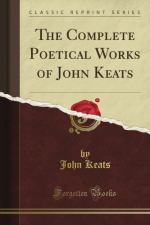|
This section contains 339 words (approx. 1 page at 400 words per page) |

|
Ode to a Nightingale (Poem) Summary & Study Guide Description
Ode to a Nightingale (Poem) Summary & Study Guide includes comprehensive information and analysis to help you understand the book. This study guide contains the following sections:
This detailed literature summary also contains Quotes and a Free Quiz on Ode to a Nightingale (Poem) by John Keats.
The following version of this poem was used to create this guide: Keats, John. "Ode to a Nightingale." Poetry Foundation Online. https://www.poetryfoundation.org/poems/44479/ode-to-a-nightingale.
Note that parenthetical citations within the guide refer to the line number from which the quotation is taken.
“Ode to a Nightingale” is an 80-line poem in ten stanzas written by British Romantic poet John Keats. It first appeared in the Annals of Fine Arts in July, 1819, and is one of the six odes Keats composed that year. These odes represent Keats’s search for a new verse form he believed would improve on the sonnet. “Ode to a Nightingale” is often read with reference to Keats’s argument – put forth in his letters – that great poetry has a “negative capability” to find beauty in mystery rather than in singular ideas of truth. Keats wrote “Ode to a Nightingale” within weeks of his brother’s death from tuberculosis, the “family disease” that took many of his family members and to which Keats himself would succumb within two years.
Keats is said to have written the poem in one day in a garden where a nightingale had made its nest. The resulting ode celebrates the bird’s carefree song while the speaker himself wrestles with a pervasive sense of grief and worry. The poem takes place while the speaker listens to the nightingale’s song in a drowsy trance. He wishes to merge with the bird’s song and its metaphorical flight from human troubles. He thus imagines his identity and cares dissolving through wine, imagination, and the prospect of suicide before the song disappears and he returns to his “sole self” (72). Rediscovering his grief at every turn, he is finally left alone with his pain as the bird flies away. The poem exemplifies Keats’s notion of “negative capability,” referring to a position of epistemological uncertainty. It thus begins with the speaker entering a drowsy daze and ends with a question of whether he is awake or dreaming.
Read more from the Study Guide
|
This section contains 339 words (approx. 1 page at 400 words per page) |

|



